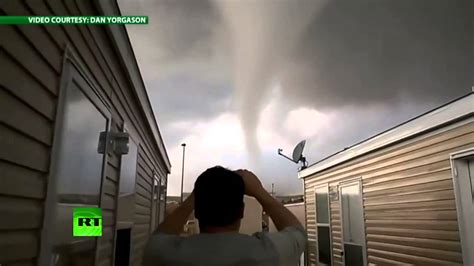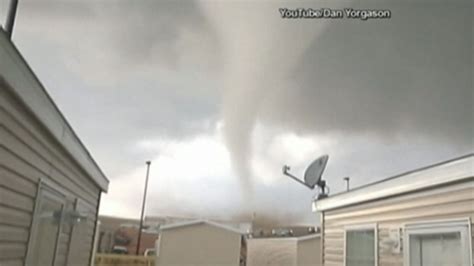
A wolverine, a notoriously elusive and solitary creature, has been captured on trail camera footage far outside its typical range, exciting wildlife experts and sparking curiosity about its journey. The rare sighting, documented in a region where wolverines are seldom seen, provides valuable insights into the animal’s behavior and potential range expansion.
Wolverine Wanders Far From Home, Captured on Trail Camera
Trail cameras in a region distant from typical wolverine habitat have captured stunning footage of the solitary creature, triggering excitement among wildlife biologists and conservationists. The sighting, confirmed by experts, marks a significant departure from the wolverine’s known range, raising questions about its dispersal patterns and the potential impacts of climate change on its habitat.
The images, obtained by an anonymous trail camera user, show a wolverine moving through a wooded area, exhibiting behaviors consistent with its species. While the exact location of the sighting is being kept confidential to protect the animal, officials have confirmed that it is miles away from any known established wolverine populations. This unusual occurrence has prompted discussions about the factors that may have led to the wolverine’s extended journey.
“This is definitely an exciting discovery,” stated a wildlife biologist familiar with the sighting, who requested anonymity due to the sensitivity of the information. “It provides valuable data on wolverine dispersal and highlights the importance of continued monitoring efforts.”
The wolverine, Gulo gulo, is the largest member of the weasel family and is known for its strength, ferocity, and solitary nature. Typically found in high-elevation habitats in the northern United States, Canada, and Alaska, wolverines are opportunistic scavengers and predators, playing a crucial role in their ecosystems. Their low population densities and elusive behavior make them difficult to study, and sightings such as this one are rare opportunities to gather information about their movements and habitat use.
Historical Context and Conservation Status
Wolverines once roamed across a much wider range, including parts of the Midwestern and Eastern United States. However, due to trapping, habitat loss, and other human-caused factors, their populations have significantly declined. Today, wolverines are primarily found in the Rocky Mountains, the North Cascades, and portions of the northern Great Lakes region.
The conservation status of wolverines varies depending on the region. In the contiguous United States, they have been the subject of numerous listing petitions under the Endangered Species Act (ESA). While the U.S. Fish and Wildlife Service (USFWS) has considered listing wolverines as threatened or endangered on multiple occasions, these efforts have been met with legal challenges and conflicting scientific data. Currently, wolverines are not federally listed as threatened or endangered in the contiguous United States, though they remain a species of concern in many states.
In Canada and Alaska, wolverine populations are generally considered more stable, but they still face threats from habitat loss, climate change, and trapping. Conservation efforts in these regions focus on monitoring populations, managing trapping regulations, and protecting critical habitat.
Factors Influencing Wolverine Dispersal
The reasons behind the wolverine’s appearance far from its known range are complex and likely involve a combination of factors. One possibility is that the animal is a young male dispersing from its natal territory in search of new territory and mating opportunities. Young male wolverines are known to travel long distances in search of suitable habitat, and this could explain its presence in an unexpected location.
Another factor that may be influencing wolverine dispersal is climate change. As temperatures rise and snowpack diminishes, wolverine habitat is changing, potentially forcing them to seek out new areas. Wolverines rely on deep snow for denning and caching food, and changes in snow conditions could make it more difficult for them to survive in their traditional habitats.
Habitat fragmentation, caused by roads, logging, and other human activities, can also limit wolverine movement and force them to travel longer distances to find suitable habitat. As human development continues to encroach on wolverine habitat, it is becoming increasingly important to manage landscapes in a way that allows for wildlife connectivity and dispersal.
Implications of the Sighting
The wolverine sighting has several important implications for wildlife management and conservation. First, it highlights the importance of continued monitoring efforts, including the use of trail cameras, to track wolverine populations and movements. Trail cameras can provide valuable data on wolverine distribution, habitat use, and behavior, which can inform conservation strategies.
Second, the sighting underscores the need to protect and restore wolverine habitat, particularly in areas that may serve as important dispersal corridors. This includes managing forests to maintain adequate snow cover, minimizing habitat fragmentation, and reducing human disturbance in critical areas.
Third, the sighting raises questions about the potential impacts of climate change on wolverine populations. As climate change continues to alter wolverine habitat, it is important to develop adaptation strategies to help them cope with these changes. This could include creating new protected areas, managing snow conditions, and reducing other stressors that could exacerbate the effects of climate change.
Expert Opinions and Perspectives
Wildlife biologists and conservationists have expressed a range of opinions about the significance of the wolverine sighting. Some experts believe that it is a positive sign, indicating that wolverine populations may be more resilient than previously thought. Others caution that it is important to carefully monitor the situation to ensure that the wolverine is not facing undue stress or threats.
“It’s exciting to see a wolverine in an area where they haven’t been documented in a long time,” said Dr. Emily Johnson, a wolverine expert at the University of Montana. “This sighting could be a sign that wolverines are expanding their range, or it could just be a one-time event. We need to continue to monitor wolverine populations and habitat to better understand their long-term trends.”
Other experts emphasize the importance of protecting wolverine habitat and reducing human disturbance. “Wolverines are highly sensitive to human activities, and they need large, undisturbed areas to survive,” said Sarah Jones, a conservation biologist with the Wildlife Conservation Society. “We need to work to protect wolverine habitat and reduce human impacts, such as trapping and habitat fragmentation, to ensure that wolverines continue to thrive.”
Ongoing Research and Monitoring Efforts
Researchers and wildlife agencies are currently conducting a variety of studies to learn more about wolverine populations and behavior. These studies include:
- Population Surveys: Conducting surveys to estimate wolverine population sizes and distribution.
- Genetic Analysis: Analyzing wolverine DNA to determine their genetic diversity and relatedness.
- Telemetry Studies: Tracking wolverines using GPS collars to monitor their movements and habitat use.
- Habitat Modeling: Developing models to predict wolverine habitat suitability under different climate scenarios.
- Trail Camera Monitoring: Using trail cameras to detect wolverines and monitor their behavior.
These research efforts are providing valuable information that is being used to inform wolverine conservation and management decisions.
The Future of Wolverines
The future of wolverines is uncertain, but there are reasons to be optimistic. With continued monitoring, habitat protection, and adaptive management strategies, it is possible to ensure that wolverines continue to thrive in the face of climate change and other threats.
The recent wolverine sighting serves as a reminder of the importance of protecting wildlife and wild places. By working together, we can ensure that future generations have the opportunity to experience the wonder and beauty of these magnificent creatures. The documented sighting, in essence, emphasizes the importance of both proactive and reactive conservation measures which will ensure their survival.
Further Considerations
The fact that the location of the sighting is being kept confidential is understandable. This is to prevent unwanted attention and possible harm to the animal. Wolverines, already few in number, are vulnerable to poaching and habitat destruction. Revealing the location could lead to an influx of people hoping to catch a glimpse, photograph, or even attempt to capture the animal, despite those activities being illegal.
Moreover, the news also touches on a larger, more systemic issue: the impact of human activity on wildlife and their habitats. As human populations grow and spread, they increasingly encroach upon the natural world, pushing animals into smaller and smaller spaces. This results in habitat loss, fragmentation, and increased competition for resources, all of which can threaten wildlife populations.
The story serves as an urgent reminder of the importance of conservation efforts. Protecting the wolverine also means protecting its environment: vast, interconnected forests and high-altitude mountains. This requires a concerted effort on the part of governments, organizations, and individuals to conserve landscapes, reduce pollution, and mitigate the effects of climate change.
The Role of Trail Cameras
The use of trail cameras has revolutionized wildlife monitoring. These remote, automated cameras can capture images and videos of animals without disturbing them, providing valuable data on their presence, behavior, and abundance. The wolverine sighting is a testament to the effectiveness of trail cameras in detecting rare and elusive species.
In recent years, trail cameras have become increasingly popular among wildlife enthusiasts, researchers, and land managers. They are relatively inexpensive, easy to deploy, and can operate for extended periods without requiring human intervention. This makes them an ideal tool for monitoring wildlife populations in remote and inaccessible areas.
Trail cameras have been used to study a wide range of species, from large mammals such as bears and wolves to small birds and amphibians. They have also been used to monitor invasive species, assess the impacts of habitat loss, and evaluate the effectiveness of conservation efforts.
The Challenges of Studying Wolverines
Studying wolverines presents several challenges. Their low population densities, elusive behavior, and preference for remote and rugged terrain make them difficult to find and observe. Wolverines also have large home ranges, often covering hundreds of square kilometers, making it difficult to track their movements and habitat use.
Despite these challenges, researchers have developed a variety of techniques for studying wolverines, including:
- Live Trapping: Capturing wolverines using live traps and fitting them with GPS collars.
- Snow Tracking: Following wolverine tracks in the snow to learn about their movements and behavior.
- Hair Snaring: Collecting wolverine hair samples for genetic analysis.
- Scat Surveys: Collecting wolverine scat (feces) for dietary analysis.
These techniques, combined with the use of trail cameras, are providing valuable insights into wolverine ecology and conservation.
The Importance of Public Awareness
Public awareness is crucial for wolverine conservation. By educating people about the importance of wolverines and the threats they face, we can encourage them to support conservation efforts and take actions to protect these magnificent creatures.
There are many ways to get involved in wolverine conservation, including:
- Supporting conservation organizations: Donating to or volunteering with organizations that are working to protect wolverines and their habitat.
- Advocating for conservation policies: Contacting elected officials and urging them to support policies that protect wolverines and their habitat.
- Reducing human disturbance: Avoiding activities that could disturb wolverines, such as hiking or camping in sensitive areas.
- Reporting wolverine sightings: Reporting any wolverine sightings to local wildlife agencies.
- Educating others: Sharing information about wolverines with friends, family, and neighbors.
FAQ about Wolverine Sighting
Q1: What is a wolverine?
A: A wolverine (Gulo gulo) is the largest member of the weasel family, known for its strength, ferocity, and solitary nature. They are typically found in high-elevation habitats in the northern United States, Canada, and Alaska, and are opportunistic scavengers and predators. “They’re basically a large weasel,” as some researchers have described them, emphasizing their biological lineage within the mustelid family.
Q2: Where are wolverines typically found?
A: Wolverines are typically found in high-elevation habitats in the northern United States (primarily the Rocky Mountains and North Cascades), Canada, and Alaska. They prefer areas with deep snow for denning and caching food. Their historical range was much larger, but due to human activities, they’re now mostly confined to these northern and mountainous regions.
Q3: Why is this sighting unusual?
A: This sighting is unusual because the wolverine was documented miles away from any known established wolverine populations. This suggests that the animal may be dispersing, searching for new territory, or that its habitat has been affected by climate change. It goes against typical distribution models and expected territories of the animal.
Q4: What factors might have led to this wolverine wandering so far from its typical habitat?
A: Several factors could have contributed to the wolverine’s long journey, including:
- Dispersal: Young male wolverines often travel long distances to find new territory and mating opportunities.
- Climate Change: Rising temperatures and diminishing snowpack may be forcing wolverines to seek out new areas.
- Habitat Fragmentation: Human activities, such as roads and logging, can limit wolverine movement and force them to travel longer distances.
- Food Scarcity: Wolverines are opportunistic feeders. So, changes in food availability within the range could also push the animal to explore new regions.
Q5: What are the conservation implications of this sighting?
A: The sighting highlights the importance of continued monitoring efforts, including the use of trail cameras, to track wolverine populations and movements. It also underscores the need to protect and restore wolverine habitat, particularly in areas that may serve as important dispersal corridors. Furthermore, it raises questions about the potential impacts of climate change on wolverine populations and the need to develop adaptation strategies. The sighting also points out the importance of protecting the habitat.
The Importance of Ecosystem Balance
Wolverines play a crucial role in maintaining the health and balance of their ecosystems. As opportunistic scavengers and predators, they help to control populations of other animals and keep ecosystems free of disease. Wolverines also contribute to nutrient cycling by scavenging on carcasses and distributing nutrients throughout their territories.
The loss of wolverines from an ecosystem can have cascading effects on other species and ecological processes. For example, if wolverines are removed from an area, populations of their prey species may increase, leading to overgrazing and habitat degradation. Conversely, the decline of wolverine populations can also negatively impact scavenger communities, as other scavengers may not be as efficient at utilizing carcasses.
Community Involvement and Citizen Science
Citizen science initiatives can play a vital role in wolverine conservation. By engaging members of the public in data collection and monitoring efforts, researchers can gather valuable information over a wider geographic area and at a lower cost. Citizen science projects can also help to raise public awareness and foster a sense of stewardship for wolverines and their habitat.
There are many ways for citizens to get involved in wolverine conservation, including:
- Reporting Sightings: Reporting any wolverine sightings to local wildlife agencies.
- Participating in Trail Camera Surveys: Assisting researchers with deploying and monitoring trail cameras.
- Collecting Snow Tracking Data: Following wolverine tracks in the snow and recording data on their movements and behavior.
- Educating Others: Sharing information about wolverines with friends, family, and neighbors.
- Supporting Conservation Organizations: Donating to or volunteering with organizations that are working to protect wolverines and their habitat.
The Role of Government Agencies
Government agencies play a critical role in wolverine conservation. These agencies are responsible for managing wolverine populations, protecting wolverine habitat, and enforcing laws that protect wolverines from poaching and other threats.
In the United States, the U.S. Fish and Wildlife Service (USFWS) has primary responsibility for managing wolverine populations. The USFWS has conducted numerous studies on wolverines and has considered listing them as threatened or endangered under the Endangered Species Act (ESA). However, the USFWS has so far declined to list wolverines, citing conflicting scientific data and legal challenges.
State wildlife agencies also play a role in wolverine conservation. These agencies are responsible for managing wolverine populations within their respective states and for implementing conservation programs. State wildlife agencies often work in partnership with federal agencies, conservation organizations, and private landowners to protect wolverines and their habitat.
In Canada, Environment and Climate Change Canada is responsible for managing wolverine populations. The Canadian government has developed a national recovery strategy for wolverines and is working to protect wolverine habitat and reduce human impacts.
The Importance of International Cooperation
Wolverine conservation requires international cooperation. Wolverines are found in multiple countries, and their populations are interconnected. Therefore, it is essential for countries to work together to manage wolverine populations, protect wolverine habitat, and address threats to wolverines, such as climate change and poaching.
International agreements, such as the Convention on International Trade in Endangered Species (CITES), can help to protect wolverines from illegal trade. CITES regulates the international trade of wolverine products, such as fur, to prevent overexploitation and ensure that wolverine populations are not threatened by trade.
The Ethical Considerations of Wildlife Management
Wildlife management decisions often involve complex ethical considerations. Balancing the needs of wildlife with the needs of humans can be challenging, and there is often no easy answer. In the case of wolverines, ethical considerations include:
- The right to exist: Do wolverines have a right to exist, regardless of their economic or ecological value?
- The value of biodiversity: Is it important to protect wolverine populations to maintain biodiversity?
- The impact of human activities: Should human activities be restricted to protect wolverine habitat?
- The rights of private landowners: How should the rights of private landowners be balanced with the need to protect wolverine habitat?
These ethical considerations should be carefully weighed when making wildlife management decisions.
Conclusion
The wolverine sighting far from its typical range serves as a potent reminder of the dynamic nature of wildlife populations and the ever-increasing impact of human activities on the natural world. This lone wolverine’s journey underscores the crucial need for continued monitoring, habitat protection, and proactive conservation efforts to ensure the survival of this iconic species. By fostering public awareness, supporting scientific research, and implementing effective management strategies, we can strive to create a future where wolverines continue to roam wild and free, contributing to the health and balance of their ecosystems. The story of this wandering wolverine is not just a tale of a single animal, but a call to action for all those who value the preservation of biodiversity and the integrity of our planet. Protecting wolverines also means protecting the environment.









